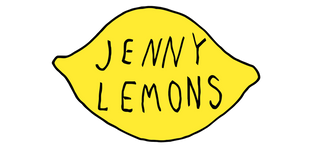Demystifying the French Knot: DIY Embroidery Tutorial

Stitch a Perfect French Knot
My grandmother introduced me to embroidery as a kid, teaching me the running stitch, backstitch, and how to knot my thread. These stitches were natural to me, and very soon, I was stitching everything I could get my hands on. I embroidered my drawings and clothing but wanted to learn more stitches.
I went back to her asking to teach me more, and we thought the french knot would be fun to try. Boy, were we wrong, I just couldn’t get it! Her knots looked like perfect little rosettes, while mine were terrible nests of thread. We both got so frustrated, we ended our lessons, and I vowed never to do a french knot again.
When I was in art school, my interest in French knots was rekindled when I did a series of embroidered portraits. I needed a stitch that would work for freckles, pupils in eyes, and dots. Begrudgingly, I revisited the french knot, and after a lot of practice, I finally cracked the code.
In this tutorial, I’ll go over how to accomplish a French knot. I hope you will achieve perfect little dots like my grandma and not end up like my younger self, teary-eyed and defeated.
Shop Embroidery Supplies
French Knot: Step by Step
Before you start the French knot, you need to get your fabric ready for embroidery. Stretch your material in a hoop, thread your needle (I am using three strands of DMC Variegated Embroidery Floss), and knot off your thread.
If you need a refresher on how to get started, check out our blog post Getting Started with Embroidery- Stretching Fabric and Threading a Needle.


1. Begin by piercing your needle through the back of your fabric so your thread is coming out the front.
2. Hold your thread straight up and place your needle behind the thread, making a letter “T”.


3. Twist the thread around the needle three times.
4. Without letting go of the thread, pierce the needle back into the fabric, right next to your original hole.


5. Pull on the thread so that the little bundle of thread is tight and flat against the fabric.
6. The little bundle of thread should not be loose at all.


7. Remove your hands from the needle and thread. It’s okay! The knot will not fall apart!
Learn Embroidery E-Course

Hooray! You made a french knot! Now create a few more to get the knot into your muscle memory.
Helpful Tips:
- Twisting the thread around the needle more than three times will result in a taller French knot, not a bigger knot. If you would like to make a bigger knot, increase the number of threads that you are stitching with.
- You can jump around your fabric doing French knots. Please make sure that your jumps are no longer than once inch. Longer jumps can cause snags on the back of your fabric.
- Once you're done making French knots, knot off the stitch on the back of the fabric. I know , it feels arbitrary to knot a knot, but it's important to make sure all stitches are secure. If you need a refresher on how to knot off your fabric, check out this blog post about getting started with embroidery.
By Jennie Lennick
Designer, entrepreneur, and lover of crafts! Boss Lady at Jenny Lemons in San Francisco.













Comments
Nancy Altman said:
I learned to make French Knots in my 30s and made a queen size bedspread. Cut the squares, dotted the pattern(basket with flowers) completed the entire thing. Put all the squares together and trimmed all of them with French Knots. Wouldn’t take anything for it.